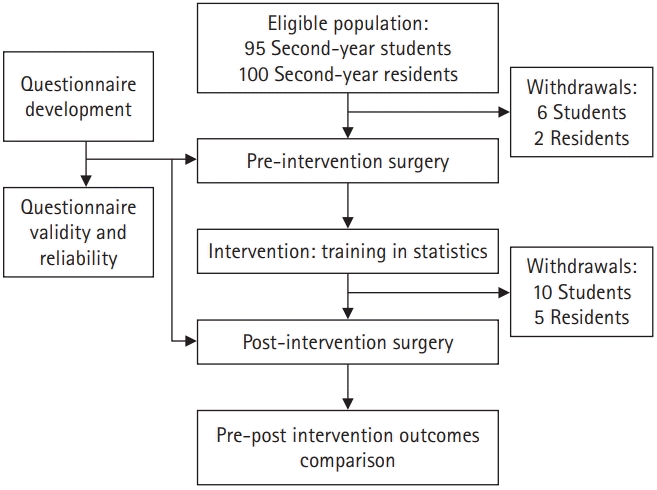1. Norman GR, Monteiro SD, Sherbino J, Ilgen JS, Schmidt HG, Mamede S. The causes of errors in clinical reasoning: cognitive biases, knowledge deficits, and dual process thinking. Acad Med. 2017; 92:23–30.
https://doi.org/10.1097/ACM.0000000000001421.

2. Peng J, Li H, Miao D, Feng X, Xiao W. Five different types of framing effects in medical situation: a preliminary exploration. Iran Red Crescent Med J. 2013; 15:161–165.
https://doi.org/10.5812/ircmj.8469.

3. Peng J, Jiang Y, Miao D, Li R, Xiao W. Framing effects in medical situations: distinctions of attribute, goal and risky choice frames. J Int Med Res. 2013; 41:771–776.
https://doi.org/10.1177/0300060513476593.

4. Akl EA, Oxman AD, Herrin J, Vist GE, Terrenato I, Sperati F, Costiniuk C, Blank D, Schunemann H. Framing of health information messages. Cochrane Database Syst Rev. 2011; (12):CD006777.
https://doi.org/10.1002/14651858.CD006777.pub2.

6. Reilly JB, Ogdie AR, Von Feldt JM, Myers JS. Teaching about how doctors think: a longitudinal curriculum in cognitive bias and diagnostic error for residents. BMJ Qual Saf. 2013; 22:1044–1050.
https://doi.org/10.1136/bmjqs-2013-001987.

7. Ogdie AR, Reilly JB, Pang WG, Keddem S, Barg FK, Von Feldt JM, Myers JS. Seen through their eyes: residents’ reflections on the cognitive and contextual components of diagnostic errors in medicine. Acad Med. 2012; 87:1361–1367.
https://doi.org/10.1097/ACM.0b013e31826742c9.

8. Sherbino J, Yip S, Dore KL, Siu E, Norman GR. The effectiveness of cognitive forcing strategies to decrease diagnostic error: an exploratory study. Teach Learn Med. 2011; 23:78–84.
https://doi.org/10.1080/10401334.2011.536897.

9. Sherbino J, Kulasegaram K, Howey E, Norman G. Ineffectiveness of cognitive forcing strategies to reduce biases in diagnostic reasoning: a controlled trial. CJEM. 2014; 16:34–40.
https://doi.org/10.2310/8000.2013.130860.

11. Masel J, Humphrey PT, Blackburn B, Levine JA. Evidence-based medicine as a tool for undergraduate probability and statistics education. CBE Life Sci Educ. 2015; 14:ar42.
https://doi.org/10.1187/cbe.15-04-0079.

12. Borracci RA, Pineiro DJ, Arribalzaga EB. Effects of presenting risk information in different formats to cardiologists: a Latin American survey. Arch Cardiol Mex. 2015; 85:3–8.
https://doi.org/10.1016/j.acmx.2014.09.003.

13. Thomas AK, Millar PR. Reducing the framing effect in older and younger adults by encouraging analytic processing. J Gerontol B Psychol Sci Soc Sci. 2012; 67:139–149.
https://doi.org/10.1093/geronb/gbr076.

14. Bigman CA, Cappella JN, Hornik RC. Effective or ineffective: attribute framing and the human papillomavirus (HPV) vaccine. Patient Educ Couns. 2010; 81 Suppl:S70–S76.
https://doi.org/10.1016/j.pec.2010.08.014.

15. Cook DA. If you teach them, they will learn: why medical education needs comparative effectiveness research. Adv Health Sci Educ Theory Pract. 2012; 17:305–310.
https://doi.org/10.1007/s10459-012-9381-0.

17. Best R, Charness N. Age differences in the effect of framing on risky choice: a meta-analysis. Psychol Aging. 2015; 30:688–698.
https://doi.org/10.1037/a0039447.

18. Seo MG, Goldfarb B, Barrett LF. Affect and the framing effect within individuals over time: risk taking in a dynamic investment simulation. Acad Manage J. 2010; 53:411–431.
https://doi.org/10.5465/AMJ.2010.49389383.

19. Sundelin T, Bayard F, Schwarz J, Cybulski L, Petrovic P, Axelsson J. Framing effect, probability distortion, and gambling tendency without feedback are resistant to two nights of experimental sleep restriction. Sci Rep. 2019; 9:8554.
https://doi.org/10.1038/s41598-019-44237-9.

20. Zhen S, Yu R. All framing effects are not created equal: low convergent validity between two classic measurements of framing. Sci Rep. 2016; 6:30071.
https://doi.org/10.1038/srep30071.





 PDF
PDF Citation
Citation Print
Print





 XML Download
XML Download